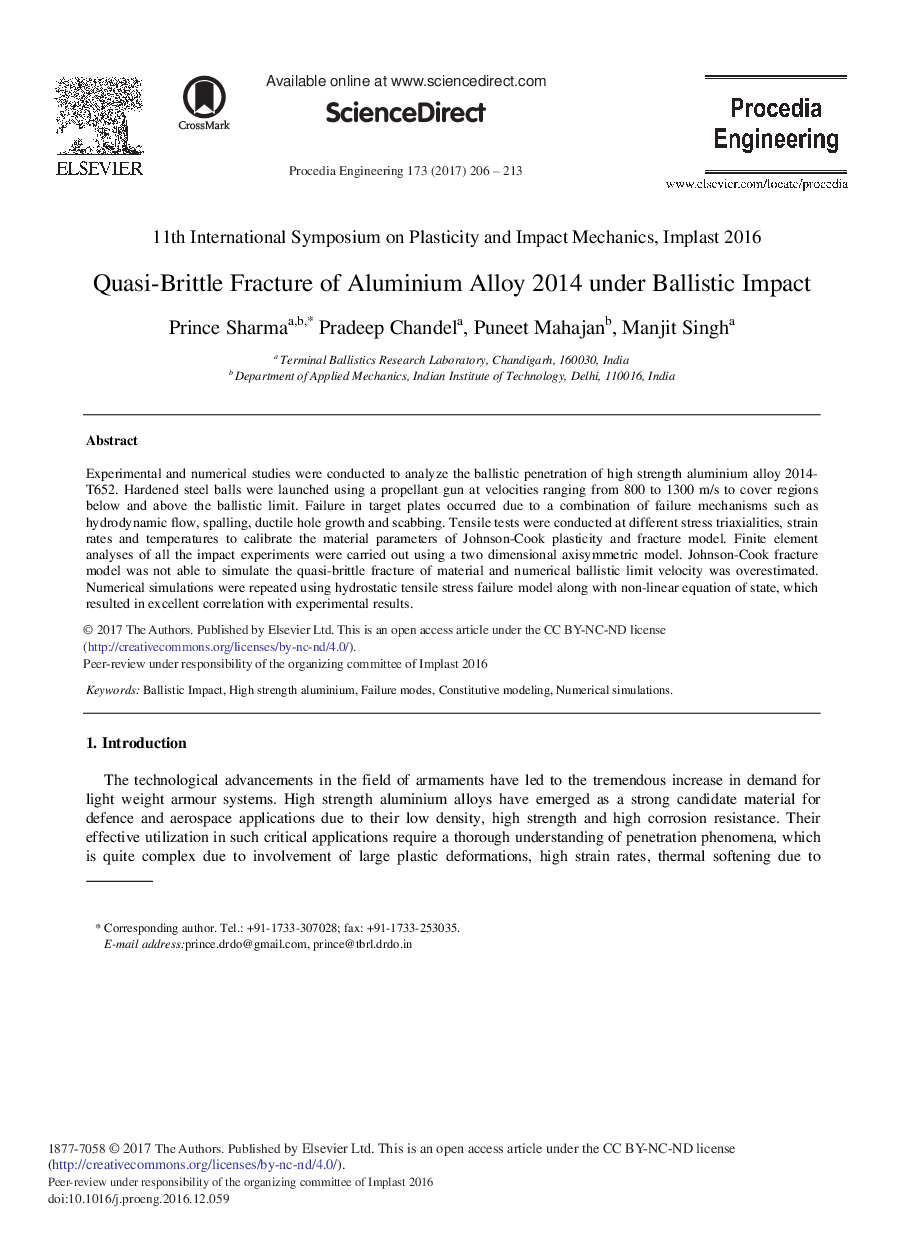| Article ID | Journal | Published Year | Pages | File Type |
|---|---|---|---|---|
| 5028299 | Procedia Engineering | 2017 | 8 Pages |
Experimental and numerical studies were conducted to analyze the ballistic penetration of high strength aluminium alloy 2014-T652. Hardened steel balls were launched using a propellant gun at velocities ranging from 800 to 1300 m/s to cover regions below and above the ballistic limit. Failure in target plates occurred due to a combination of failure mechanisms such as hydrodynamic flow, spalling, ductile hole growth and scabbing. Tensile tests were conducted at different stress triaxialities, strain rates and temperatures to calibrate the material parameters of Johnson-Cook plasticity and fracture model. Finite element analyses of all the impact experiments were carried out using a two dimensional axisymmetric model. Johnson-Cook fracture model was not able to simulate the quasi-brittle fracture of material and numerical ballistic limit velocity was overestimated. Numerical simulations were repeated using hydrostatic tensile stress failure model along with non-linear equation of state, which resulted in excellent correlation with experimental results.
